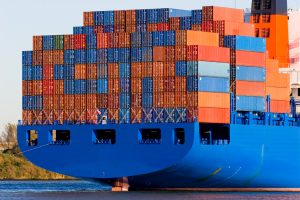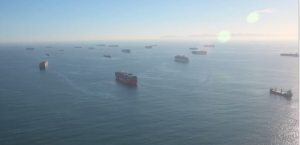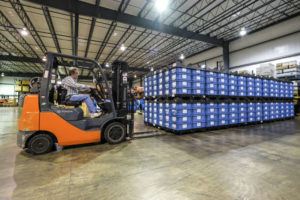The crystal ball is murky. Ocean shipping industry pundits are currently speculating congestion and record industry pricing will persist well into 2022. With so many factors at play, it’s
U.S. imports from Asia from January through May increased 40.2% over the same period last year, according to PIERS. This is typically when companies plan for what was traditional peak holiday shipping. In this overbooked, overpriced year, nothing is typical. What can a company do to work around these historic shipping costs and complications to minimize supply chain disruption?
Since the majority of businesses are not as large as Home Depot, which has contracted its own container ship to manage holiday orders, our team has this summary outlining what we’re watching along with recommendations to help manage what can be controlled during this historic time.
Port Congestion
The congestion story continues. This bottleneck has persisted since 2020, and there’s no end in sight.

On the east coast, the Port of New York/New Jersey is also managing historic numbers of inbound cargo. Container volume in March was 37% higher than March 2020, and volumes projected for 2026 in a recent long-term study by the Port Authority are already being hit this year.
Recommendation: Know the best ports available for your shipment and ask for information on the current congestion levels. LA/Long Beach is the busiest port in the United States. Are there other U.S. ports that can manage shipments? This industry suffers from extensive ripple effects. Just because your port isn’t being hit by disruption directly, there could be a small disruption that creates a tidal wave as transportation companies switch gears into different port and ramp options.
Disruption
Who could have predicted a cargo ship would get stuck in the Suez Canal for several days with a contingency plan in place? Then a late May COVID-19 outbreak at the Yantian port area, a major transport center in southern China, continues to impact the shipping industry. Terminals are operating below capacity; reports say over a dozen ships are waiting to dock and some ships are skipping the port completely. This could take months to correct.
Recommendation: Expect the unexpected. Add time into the supply chain for shipping. Our headquarters features a 17,000 square foot warehouse available to customers for supply chain 
Chassis shortages
Whether shipments are on the dock at a port or in a rail yard, chassis are hard to source. As shipments move inland, Midwest rail yards are now dealing with chassis shortages. TRAC, a chassis fleet monitoring company, is seeing the greatest chassis shortages in the Midwest: Chicago; Cincinnati; Cleveland; Columbus; Detroit; Indianapolis; Louisville; and Pittsburgh.
Due to the surge in imports, the number of 40-foot containers in May loaded in the Midwest jumped 35% from a year ago. Union Pacific Railroad has up to 2,500 containers stacked and waiting for chassis at its Joliet terminal.
JOC.com reported this month, “U.S. importers stymied by shortages of chassis at inland intermodal rail yards and limits on excess intermodal cargo are looking for space in over-the-road trucks as they struggle to get product to shelves or assembly lines.”
Recommendation: Make friends and build relationships with multiple truckers. Some trucking companies are developing new “Trucker Owned Chassis” models instead of relying on leased chassis pools, which have caused the shortage problem. The JOC.com article, cited above, says some companies are getting creative using LTL, partial and full truckload options to move shipments from ports and suggests looking at truck versus rail options depending on how fast goods are needed
Historic rate increases
JOC.com is reporting eastbound trans-Pacific carriers are pushing for general rate increases every two weeks rather than their traditional monthly increase. Rates from Hong Kong to the U.S. West Coast were up 72% from 2020. Demand related to back to school items in addition to businesses thinking ahead to move goods for the holidays is driving the pricing. Carriers are not only using GRI’s to increase rates, but they are adding in premium surcharges or container imbalance surcharges. To date, we have not seen the cap on the rates.
Recommendation: The highest rates in the history of ocean shipping are the new norm. Ask what to expect, understand how the pricing structures work, and request to be kept updated.
If you have questions or need support planning shipments in your supply chain,
please contact your Cargo Services representative or call our office directly.
